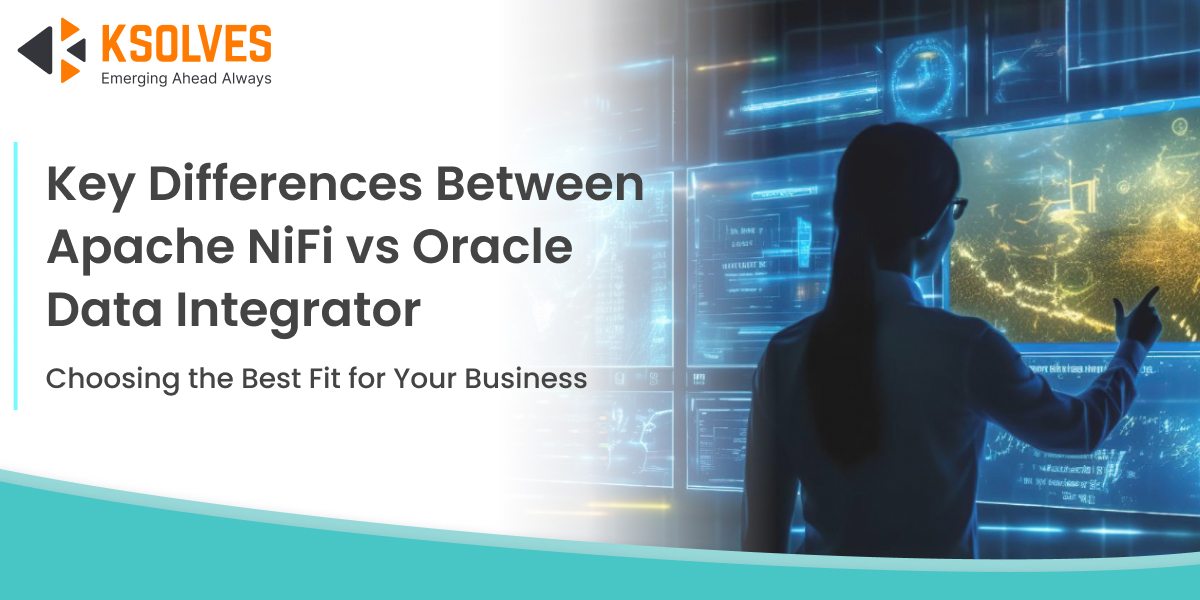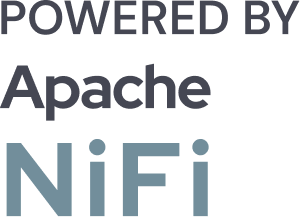Apache NiFi vs Oracle Data Integrator: Which Data Integration Tool is Right for You?
![]()

Data doesn’t sleep. It flows constantly, chaotically, and from everywhere. In a world where businesses are drowning in data from APIs, IoT devices, cloud platforms, and legacy systems, the question isn’t if you need a data integration strategy – it’s which tool will carry the weight.
This is where the role of data integration tools comes into play. Apache NiFi and Oracle Data Integrator (ODI) are two widely known tools. Both are built to orchestrate data movement and transformation at scale, but they speak different languages.
NiFi is like a fast-moving river, flexible, real-time, open-source, and made for modern, event-driven ecosystems. Oracle Data Integrator, on the other hand, is like a powerful freight train – structured, enterprise-grade, and tailored for complex batch processing in large organizations.
So, which one should you bet on to drive your data integration goals forward? Let’s compare Apache NiFi with Oracle Data Integrator and help you find the best fit—not just for your tech stack but for your vision of data-driven growth.
What is Apache NiFi?
Apache NiFi is an open-source, highly scalable data flow automation platform designed to handle the complexities of moving data between systems in real time. Originally developed as part of the U.S. National Security Agency’s (NSA) “NiagaraFiles” project and later contributed to the Apache Software Foundation, NiFi was built with security, traceability, and agility in mind—qualities that still define it today.
At its core, NiFi offers a visual, flow-based programming model where data engineers can drag, drop, and connect processors on a canvas to build sophisticated NiFi data flows, without writing extensive code. Each processor in NiFi performs a specific task, such as ingesting data from an HTTP source, transforming a JSON payload, or routing messages based on business logic.
What is Oracle Data Integrator?
Oracle Data Integrator (ODI) is a powerful, enterprise-grade data integration platform built to manage large-scale, high-performance data transformations across heterogeneous systems.
Unlike traditional ETL tools that rely heavily on staging areas and data replication, ODI follows an ELT (Extract, Load, Transform) architecture that leverages the power of target databases to perform transformations, dramatically improving performance and scalability.
At its heart, ODI embraces a declarative design approach, where developers define “what” needs to be done (the business logic), while the platform takes care of “how” it’s executed. This methodology separates design from execution, resulting in more efficient, reusable, and maintainable data integration processes.
Apache NiFi vs Oracle Data Integrator – A Detailed Comparison
| Parameters | Apache NiFi | Oracle Data Integrator |
| Architecture | Flow-based architecture using directed graphs; designed for real-time, event-driven pipelines. | ELT-based architecture; offloads transformation to target systems for high-speed batch processing. |
| Data Processing | Model streaming and real-time; handles continuous data flows. | Batch-oriented; optimized for large-scale, periodic data loads. |
| Interface & Usability | Intuitive drag-and-drop UI with real-time visual data lineage and flow tracking. | Graphical development environment (ODI Studio) for designing complex mappings and workflows. |
| Deployment Style | Open-source; can run on-premise, in the cloud, or at the edge; supports containerization. | Licensed enterprise software; tightly integrated into Oracle ecosystem and cloud services. |
| Integration Ecosystem | Protocol-agnostic; supports a wide range of sources like Kafka, MQTT, REST, FTP, cloud storage. | Best suited for Oracle technologies but supports other databases and applications via connectors. |
| Scalability | Horizontally scalable with clustering support for large data volumes and high throughput. | Scales well for enterprise workloads, especially within Oracle’s cloud and database environments. |
| Performance | Excellent for low-latency use cases; supports prioritization and backpressure control. | High-performance batch processing using ELT to leverage database engine power. |
| Use Case | Ideal for IoT, real-time monitoring, log ingestion, API orchestration, and hybrid integrations. | Ideal for enterprise data warehousing, analytics, and complex data transformations. |
| Cost | Free and open-source with optional enterprise support. | Commercial licensing; can be cost-intensive, especially outside Oracle environments. |
| Learning Curve | Easy to start for simple flows; complexity grows with custom processors and scripting. | Steeper learning curve due to enterprise features and declarative design approach. |
Apache NiFi vs Oracle Data Integrator – Key Features
Apache NiFi Features
- Visual flow designer with easy-to-configure processors
- Ingest from multiple sources concurrently
- Supports clustering and fault tolerance
- Built-in scheduling, retry, and prioritization mechanisms
- Real-time monitoring dashboard
Oracle Data Integrator Features
- Knowledge modules for reusable integration logic
- Advanced mapping, lookups, joins, and transformations
- Seamless integration with Oracle and non-Oracle systems
- Scalable architecture for big data volumes
- Lifecycle management tools for development to production
Apache NiFi vs Oracle Data Integrator – Pros and Cons
Apache NiFi Pros
- Real-time and streaming friendly
- Visual, easy-to-learn interface
- Excellent for loosely-coupled, event-driven architectures
- Open-source with a large plugin ecosystem
Apache NiFi Cons
- Not ideal for heavy, structured batch ETL
- Some advanced transformations may require custom scripting
Oracle Data Integrator Pros
- Tight integration with Oracle tools and cloud
- Enterprise-grade data governance and lineage
- Supports complex transformations and massive data volumes
- Highly reliable for large-scale, structured workloads
Oracle Data Integrator Cons
- Steep learning curve
- Heavily tied to Oracle ecosystem
- Commercial licensing can be expensive
Which One Should You Choose – Apache NiFi or Oracle Data Integrator?
- Choose Apache NiFi if you need real-time data flows, event-driven architecture, and protocol flexibility across a hybrid or cloud-native environment. It’s perfect for teams working in modern, agile data landscapes.
- Choose Oracle Data Integrator if you are already invested in Oracle’s ecosystem, and need a robust, enterprise-ready ETL/ELT engine to support high-volume batch processing, complex transformations, and strict governance.
Bonus Tip: Use Data Flow Manager with Apache NiFi
If you decide to go with NiFi but worry about deploying NiFi data flows across environments like Dev, Staging, and Production, Data Flow Manager can help. It eliminates the need for the NiFi UI and controller services to deploy and promote NiFi data flows in minutes.
With robust version control, audit logs, and a rollback mechanism, Data Flow Manager ensures that your NiFi data flows are consistent, traceable, and easily manageable across all environments. Also, it comes with an AI-powered flow creation assistant, saving your time creating NiFi flows manually.
Conclusion
Both Apache NiFi and Oracle Data Integrator bring powerful capabilities to the data integration table, but they’re built for different worlds. NiFi thrives in the fast-paced, flexible, and real-time data movement arena. Oracle Data Integrator, on the other hand, is a workhorse for structured enterprise data needs in batch mode.
Your decision should hinge on real-time vs batch, flexibility vs standardization, and open-source agility vs enterprise governance. Evaluate your architecture, team capabilities, and future scaling needs, and you’ll find your ideal match.
![]()

